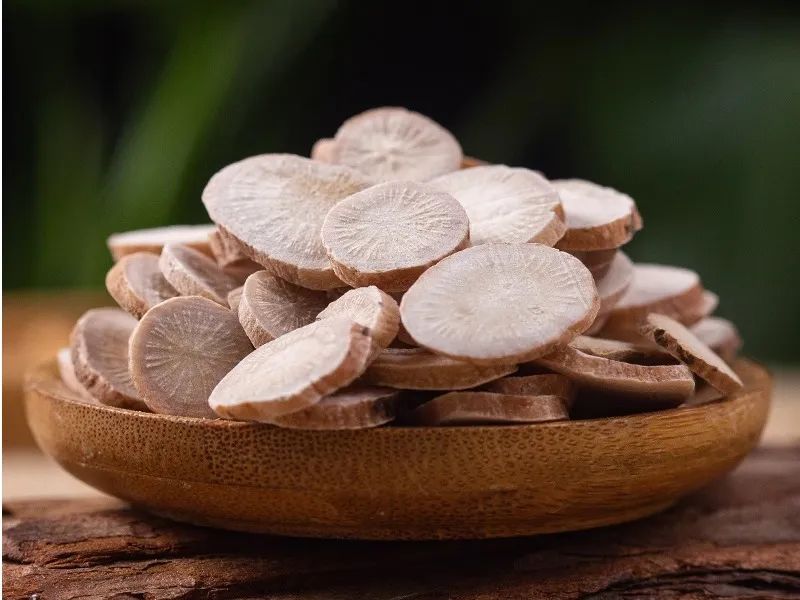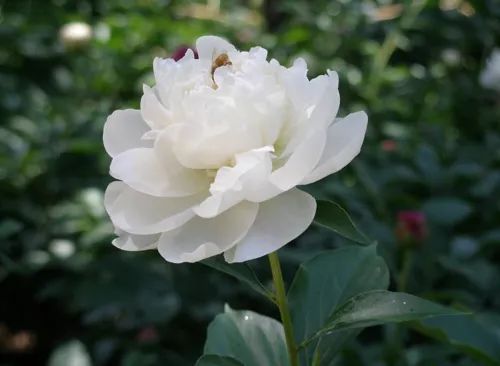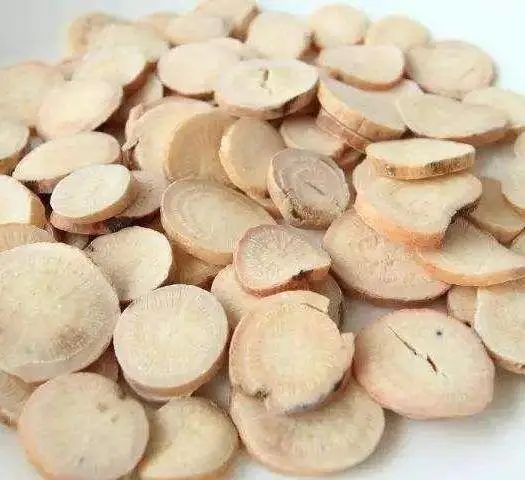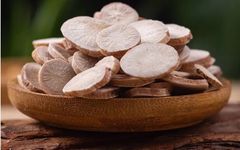

Discussion on Bai Shao
Analgesic Effects

Written by Du Hai

Introduction
Bai Shao (白芍) is the dried root of the plant Paeonia lactiflora Pall. The “Chinese Pharmacopoeia” states: “It has a bitter and sour taste, is slightly cold in nature, and enters the liver and spleen meridians. It has the effects of nourishing blood, regulating menstruation, astringing yin, stopping sweating, softening the liver, alleviating pain, and calming liver yang. It can be used to treat blood deficiency syndrome, irregular menstruation, spontaneous sweating, night sweating, flank pain, abdominal pain, limb cramping pain, and hyperactivity of liver yang. It is especially suitable for various pain syndromes.”


Modern Research



Main Chemical Components and Mechanism of Action
The main effective component of Bai Shao is total glucosides of peony (TGP), which includes benzoyl paeoniflorin, paeonolide, paeoniflorin, hydroxypaeoniflorin, and other medicinal components. Among them, paeonolide and paeoniflorin are the primary active ingredients, which also possess anti-inflammatory and hepatoprotective effects[1]. The analgesic and anti-inflammatory effects may be mediated through the regulation of prostaglandins (PG) and receptors, as well as related signaling pathways[2], inhibiting both acute and chronic immune inflammation. It also has a relaxing effect on striated and smooth muscles.
Clinical Applications
1
Muscle Spasm Pain
Whether for limb muscle spasms or gastrointestinal spasms, Bai Shao can be used in Bai Shao Gan Cao Tang (白芍甘草汤). The “Medical Heart Understanding” mentions that “Bai Shao Gan Cao Tang stops abdominal pain effectively.” Modern studies show that Bai Shao Gan Cao Tang can significantly relieve pain and markedly reduce the concentration of PGE2 in animal serum and spinal cord. The optimal ratio of Bai Shao to Gan Cao is 1:1 or 3:1. Additionally, for abdominal pain due to liver qi stagnation and spleen deficiency, Bai Shao can be combined with Bai Zhu (白术) in a ratio of 3:2; for irritable bowel syndrome[3], Bai Shao can be combined with Zhi Shi (枳实) in a 1:1 ratio.
2
Cancer Pain
Research indicates that paeoniflorin can alleviate morphine-induced microglial activation, thereby reducing morphine analgesic tolerance. TGP combined with pethidine can enhance its analgesic effect and improve the addictive potential of pethidine, reducing the required dosage[4]. Clinically, it is often combined with Gan Cao, and studies have shown[5] that Bai Shao Gan Cao Tang primarily regulates inflammatory responses and participates in biological regulation to treat cancer pain.
3
Rheumatoid Arthritis
The Bai Shao total glucoside capsule has a definite therapeutic effect on rheumatoid arthritis and is safe and reliable. Studies have shown[6] that the clinical efficacy of Bai Shao total glucoside capsule combined with celecoxib capsule for knee osteoarthritis is superior to that of celecoxib capsule alone, without increasing adverse reactions. For joint pain caused by wind-cold-dampness, it is often combined with Fu Zi (附子) and Gui Zhi (桂枝).
4
Liver Qi Stagnation and Chest Flank Pain
The liver governs the smooth flow of qi. Emotional distress can lead to liver qi stagnation, causing pain in the flanks and emotional depression. In this case, Bai Shao can be combined with Chai Hu (柴胡) in a ratio of 2:1[7].
5
Headaches and Dysmenorrhea
Chuan Xiong (川芎) has the effects of invigorating blood circulation, promoting qi flow, and alleviating pain, making it effective for dysmenorrhea and headaches. Ancient physician Li Dongyuan stated, “To treat headaches, Chuan Xiong must be used.” The ratio of Bai Shao to Chuan Xiong is 1:1. For dysmenorrhea, Dang Gui (当归) and Xiang Fu (香附) can be added to enhance the effects of invigorating blood and promoting qi flow.

Precautions for Use



High doses of Bai Shao can cause diarrhea; roasted Bai Shao can be used as a substitute. It should not be used in conjunction with Li Lu (藜芦). The recommended dosage in the pharmacopoeia is 6-15g.

Conclusion



Bai Shao has a clear analgesic effect and is widely used clinically for abdominal pain and limb spasms, with the classic formula being Bai Shao Gan Cao Tang (白芍甘草汤) (Bai Shao 6g, Gan Cao 6g).
Pharmacist Reminder:This product should be decocted and used under the guidance of TCM theory, with differential diagnosis. It is often combined with Gui Zhi (桂枝) and Fu Zi (附子) to warm and unblock the meridians, with Dang Gui (当归) to nourish blood and soften the liver, with Xiang Fu (香附) and Chuan Xiong (川芎) to promote qi and alleviate pain, and with Chai Hu (柴胡) to soothe the liver and relieve depression. It is not suitable for use in cases of yang deficiency and cold.
References
[1] Wu Lingfang, Wang Xiaoqing, Chen Xiangming, et al. Research Progress on the Chemical Composition and Pharmacological Effects of Bai Shao. International Journal of Pharmacy Research, 2020, 47(03):175-187.
[2] Dai Qianqian, Xia Huan, Xia Guiyang, et al. Research Progress on the Analgesic Effects and Mechanisms of Bai Shao and Bai Shao Total Glucosides. World Science and Technology – Modernization of Traditional Chinese Medicine, 2020, 22(01):39-46.
[3] Ye Xiaomei, Wang Dongming, Yuan Kangrui, et al. Pharmacodynamic Study of the Ratio of Zhi Shi and Bai Shao in Rats with Liver Qi Stagnation and Spleen Deficiency Type Irritable Bowel Syndrome. Journal of Guangdong Medical University, 2019, 37(06):619-622+626.
[4] Wu Li, Wang Lili, Fei Wenting, et al. Analgesic Effects of Paeoniflorin and Paeonolide on Mouse Pain Models and Their Effects on β-EP and PGE2. Chinese Journal of Traditional Chinese Medicine, 2018, 33(03):915-918.
[5] Chu Xuelai, Hou Chengzhi, Mao Yun, et al. Network Pharmacology Study on the Mechanism of Bai Shao Gan Cao Tang in Treating Cancer Pain. Journal of Hainan Medical University, 2019, 25(22):1686-1692.
[6] Wang Juan, Wang Fang. Research Progress on Bai Shao Total Glucosides in Treating Autoimmune Diseases. Medical Review, 2021, 27(22):4481-4485.
[7] He Jing. Chemical Analysis of the Chai Hu – Bai Shao Combination and Its Contribution to Xiao Yao San. Shanxi University, 2018.

(Images sourced from the internet; please contact for removal if infringing)

Southwest Medical University Affiliated Hospital
Intravenous Medication Preparation Center
Rational Use of Medicine Builds Health

